How To Grow and Care For Japanese Pieris Shrubs
Japanese Pieris (or Japanese Andromeda) is a stunning evergreen shrub known for its vibrant foliage and cascading clusters of bell-shaped flowers. Learn how to plant, grow and care for this eye-catching plant that will provide 4-season interest in your garden.
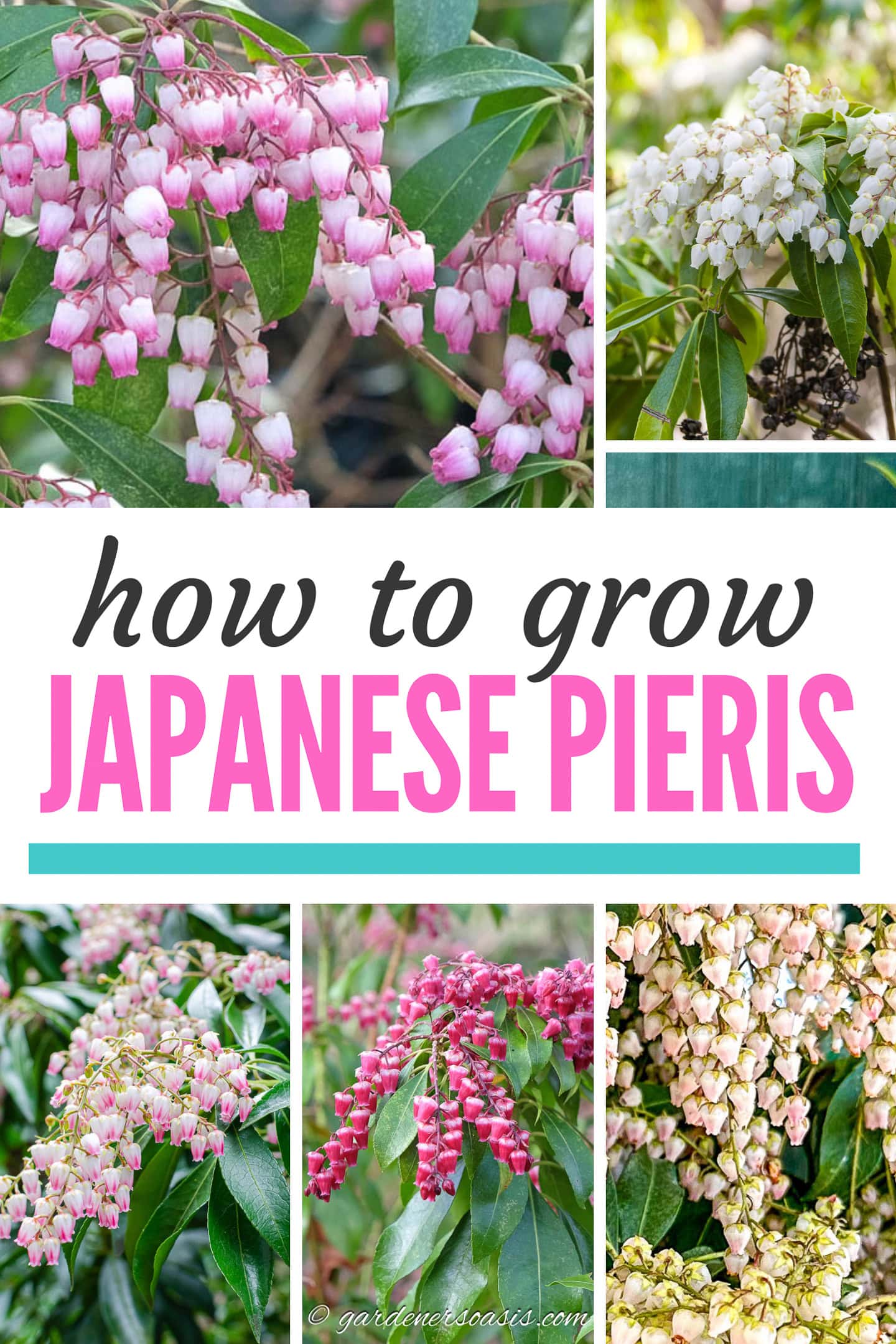
Japanese Pieris, also known as Pieris japonica (pee-AIR-iss jah-PON-ih-kah ), ‘Andromedia’ or ‘Lily-of-the-Valley’ shrub, is a low maintenance evergreen bush that thrives in part shade and provides four season interest in your garden.
If you’re looking for an alternative to Rhododendrons and Azaleas, this is the perfect shrub to consider.
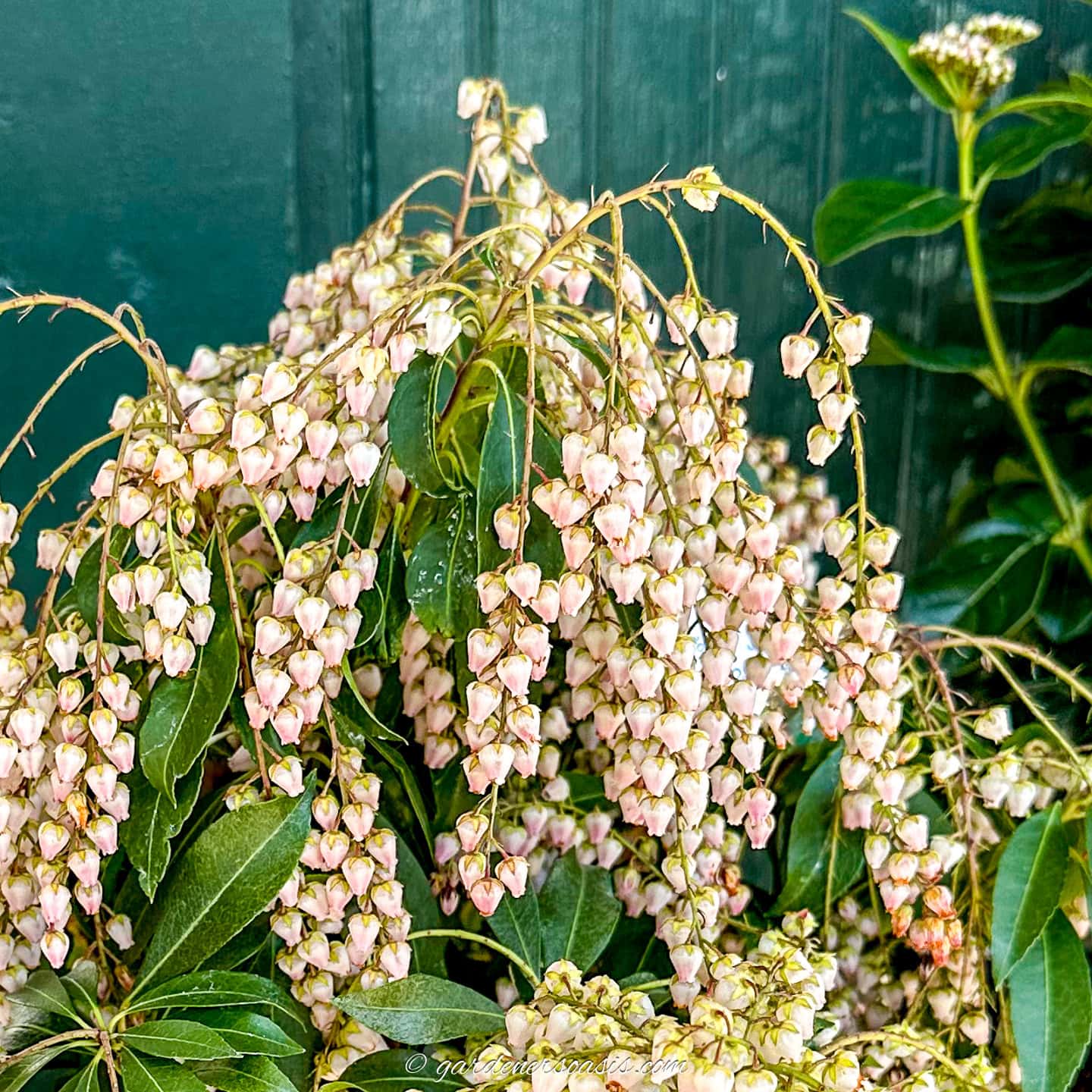
In early spring, the bush is covered in racemes of fragrant white, pink or red bell-shaped flowers that are reminiscent of a profusion of lily-of-the-valley blossoms.
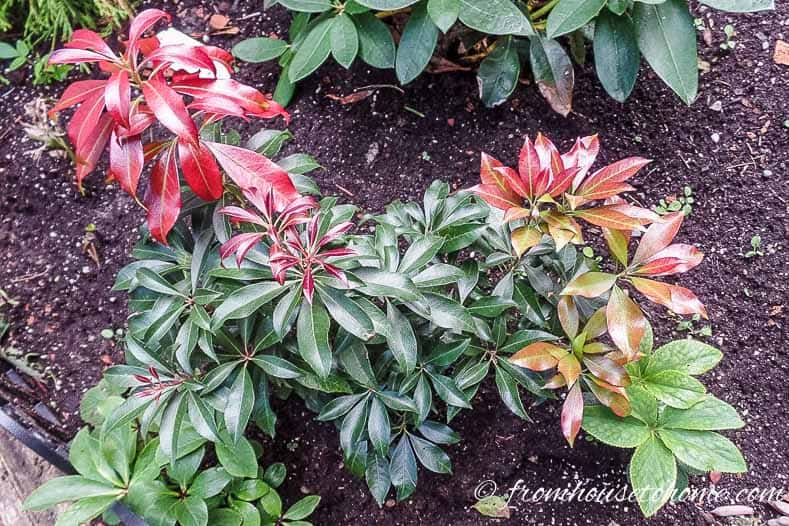
The shrubs bloom for several weeks, then the bronzy red new foliage emerges.
Eventually it matures to glossy dark green evergreen leaves.
In the fall, white bead-like flower buds appear in star shaped tendrils which contrast with the foliage and remain on the shrub all winter.
Then they’re ready to start the bloom cycle once again. A true all season plant!
Where to grow Japanese Pieris
This post may contain affiliate links. We make a small commission if you buy the products from these links (at no extra cost to you). As an Amazon Associate, I earn from qualifying purchases. But we only recommend products we would use ourselves. For more information, click here to see our disclosures.
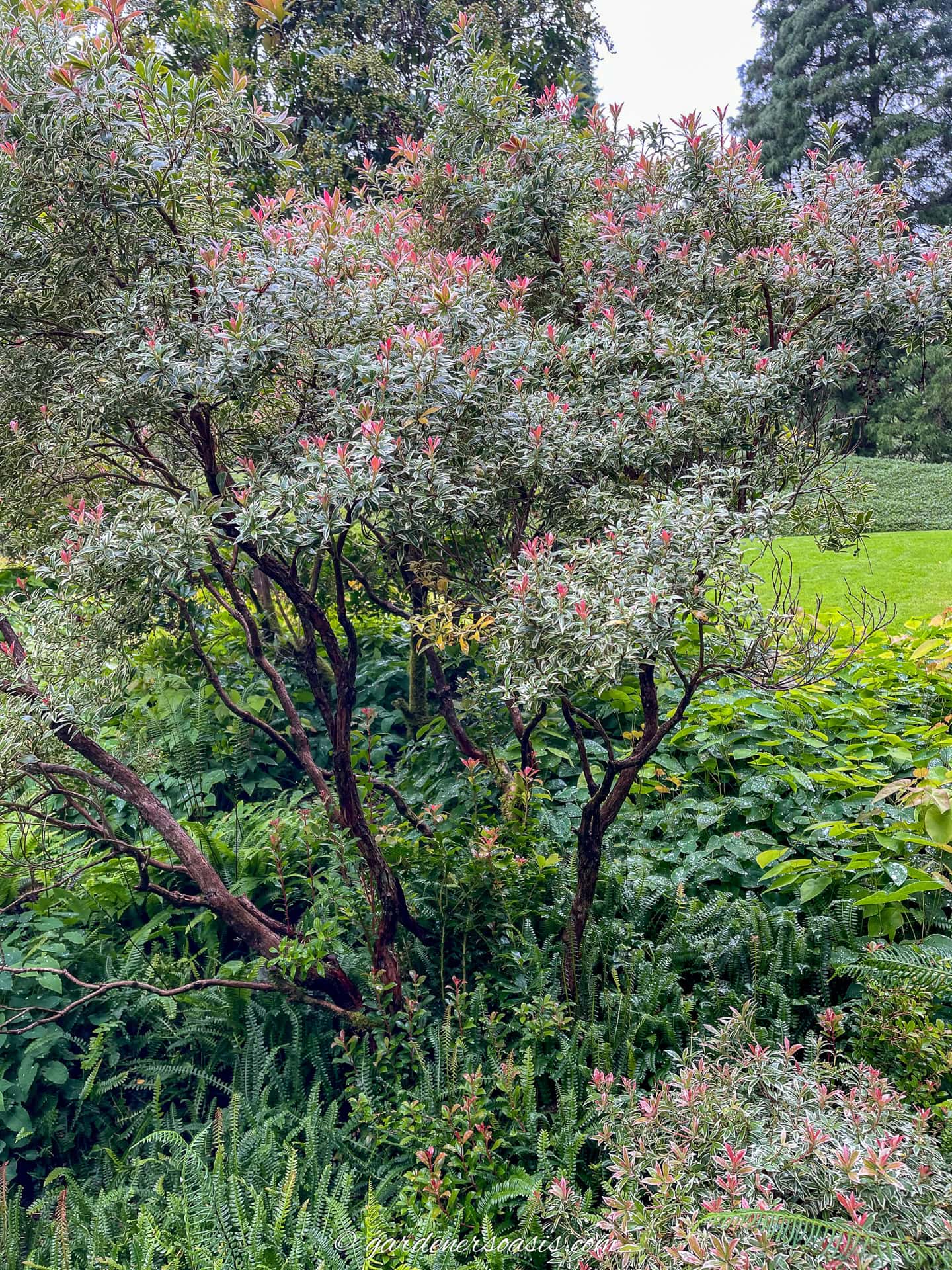
Scientific name: Pieris japonica
Zones: 5 to 8
Light: Part shade to shade
Height: 3′ to 10′ (depending on the variety)
Spread: 3′ to 5′
Bloom Time: Early spring
Flower color: White, pink, red
This member of the heather family is native to the mountainous regions of Japan, Taiwan, and east China.
But it is easy to grow in the North American zone 5 to 8 woodland landscape and has the added bonus of being deer resistant.
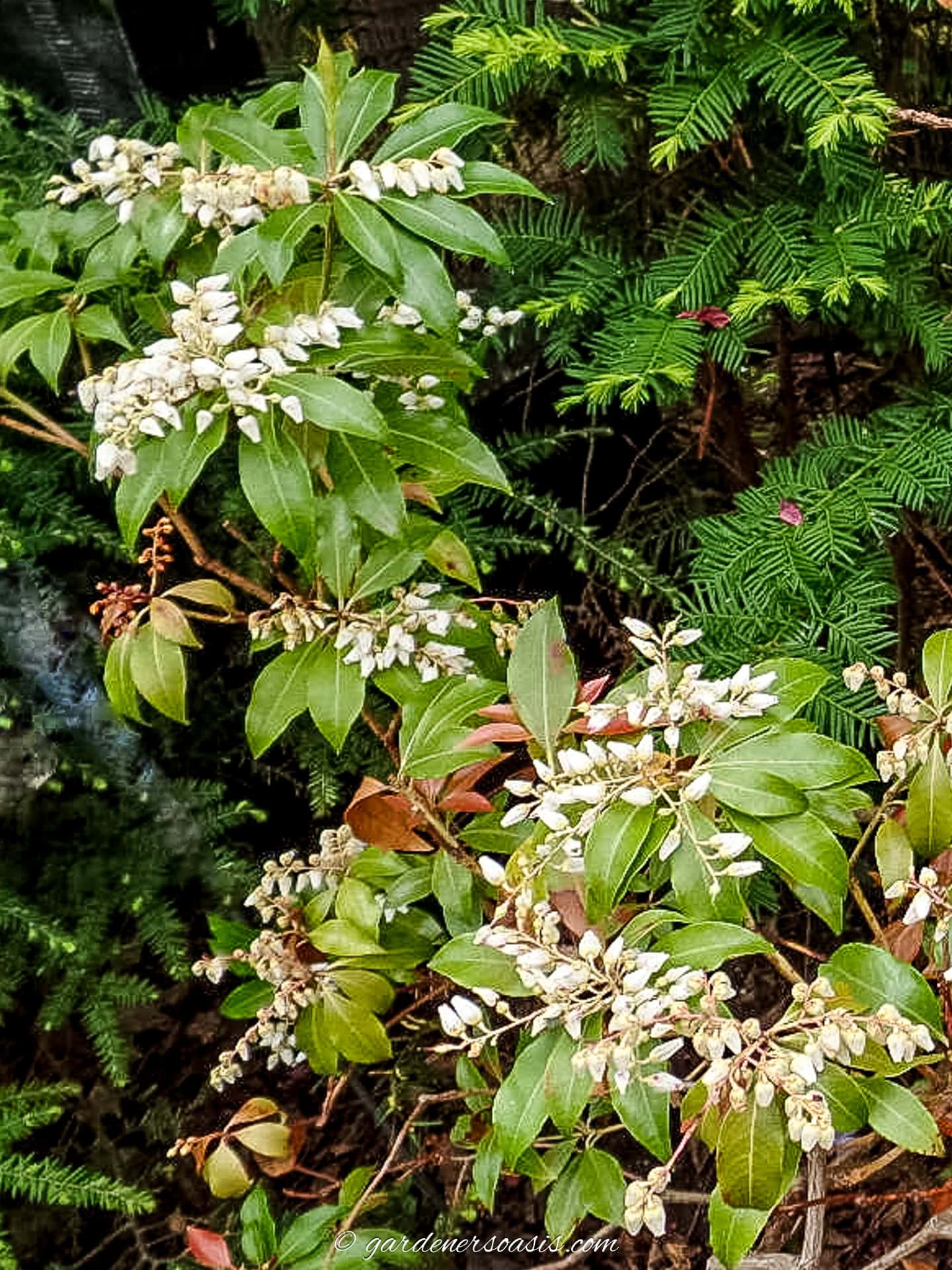
Pieris grows slowly but can eventually reach a height of more than 10 feet, so make sure to plan for its eventual size.
The 6 year old bush in my Zone 5 garden is only 4′ high and 3′ wide.
There are also hybrid varies that are compact in growth and shorter than the original Pieris japonica.
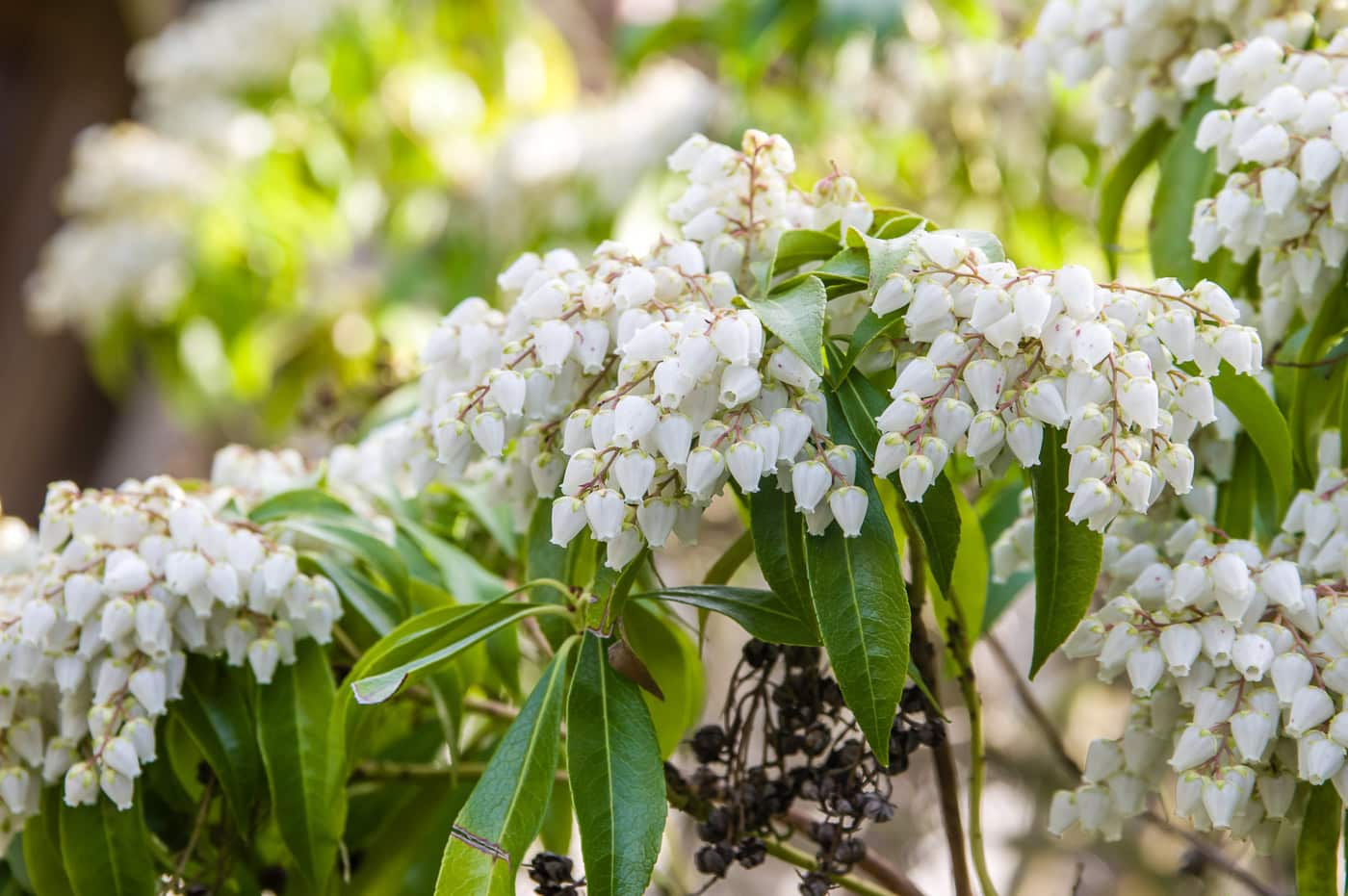
Although they will grow in full shade, there will be more blossoms and brighter spring foliage if the plant is situated in filtered or partial afternoon shade.
A word of caution, although this plant is lovely to look at, it should not be ingested. It is poisonous to people and pets.
How To Plant Pieris japonica
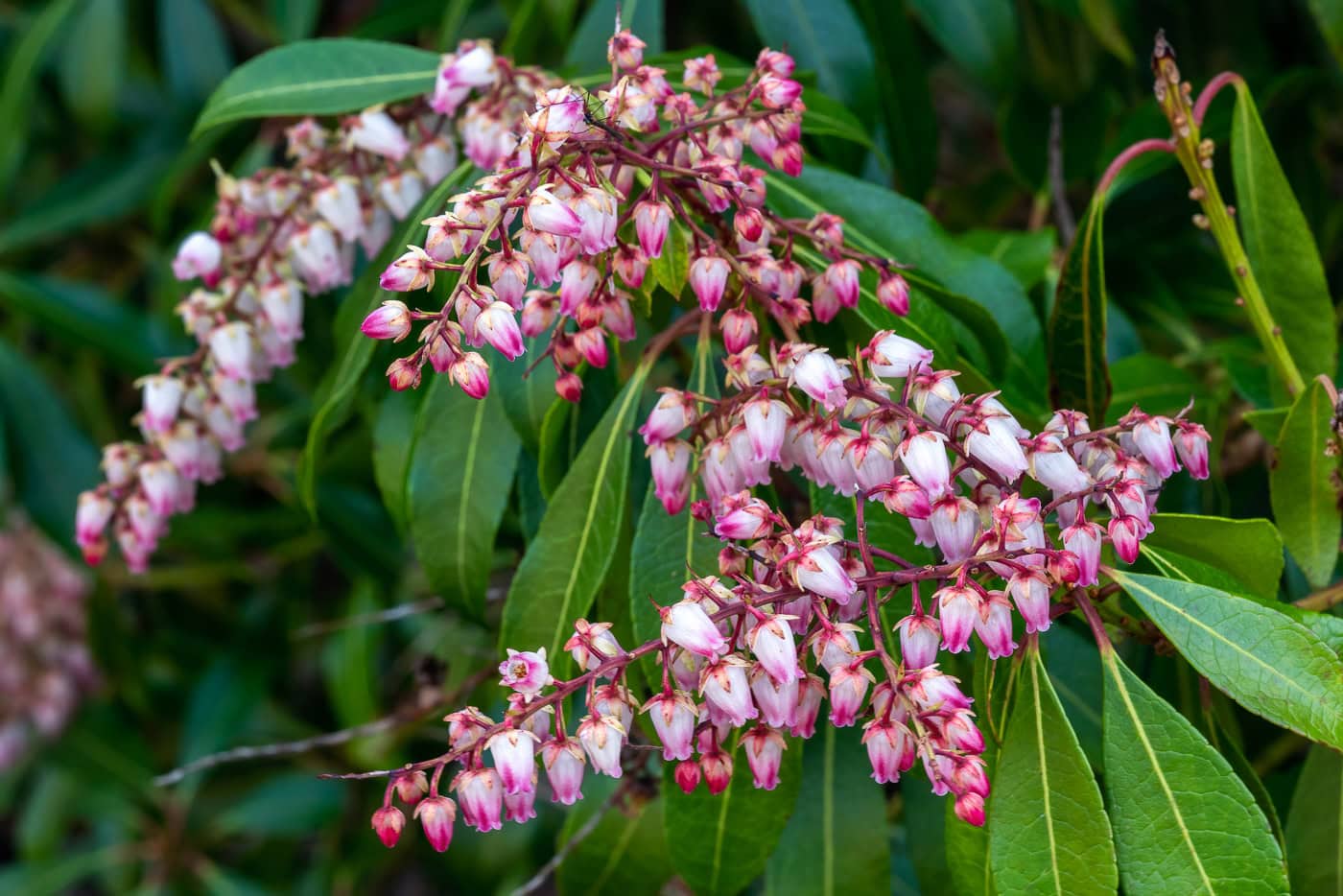
Acidic soil is required. I plant mine with a mixture of triple mix and moist peat moss.
Do not plant the root ball below soil level. Flowering will be reduced if the Pieris is planted too deep.
A 2- to 3-inch layer of mulch helps to conserve water and reduce weeds.
Then water to a depth of 3 inches into the surrounding soil, once a week.
Pruning
I have rarely had to prune my Pieris japonica ‘Mountain Fire’.
Apart from removing the spent flowers, the only pruning needed is to remove overgrowth or diseased branches.
However, if you do need to cut it back for some reason, do it in the spring immediately after it has finished blooming. Otherwise, you will cut off next year’s flower buds.
Fertilizing
Fertilize with rhododendron fertilizer* in early spring before it starts to bloom and water it in well.
You can also dump coffee grounds around the base of the Pieris to maintain soil acidity. I do this several times a year and it seems to make my plant happy.
Common Problems
Lace bugs can be a problem. If so, spray the leaves thoroughly with insecticidal soap* weekly, until the bugs are gone.
Fungal diseases can also affect Pieris japonica. But they be easily avoided by making sure not to overcrowd your shrubs with surrounding plants.
Varieties
These are some of my favorites that are perfect for your perennial border.
Pieris japonica ‘Mountain Fire’
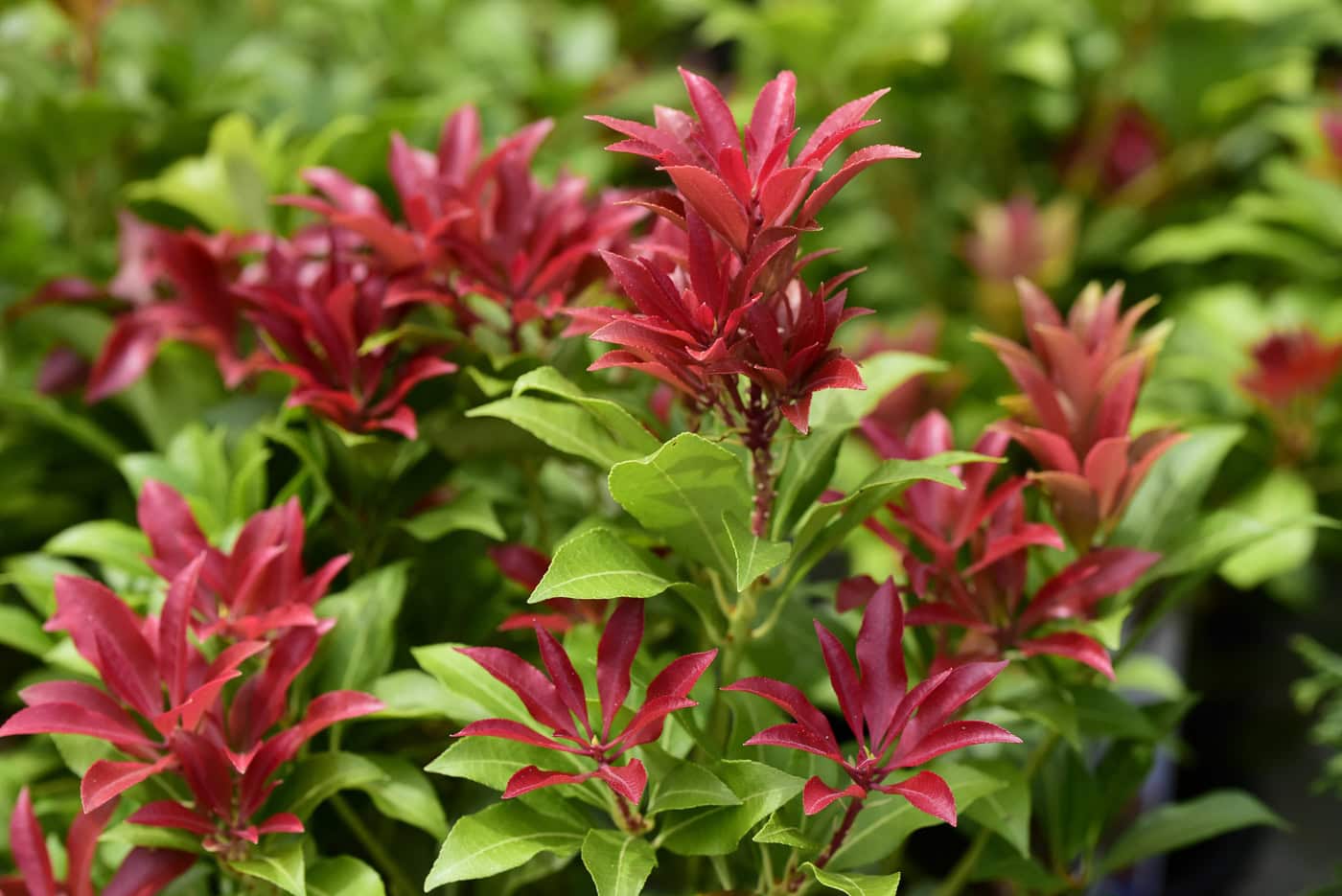
Profusion of white flowers followed by bright red new foliage that turns to dark green. Height 6 feet.
Pieris japonica ‘Valley Rose’
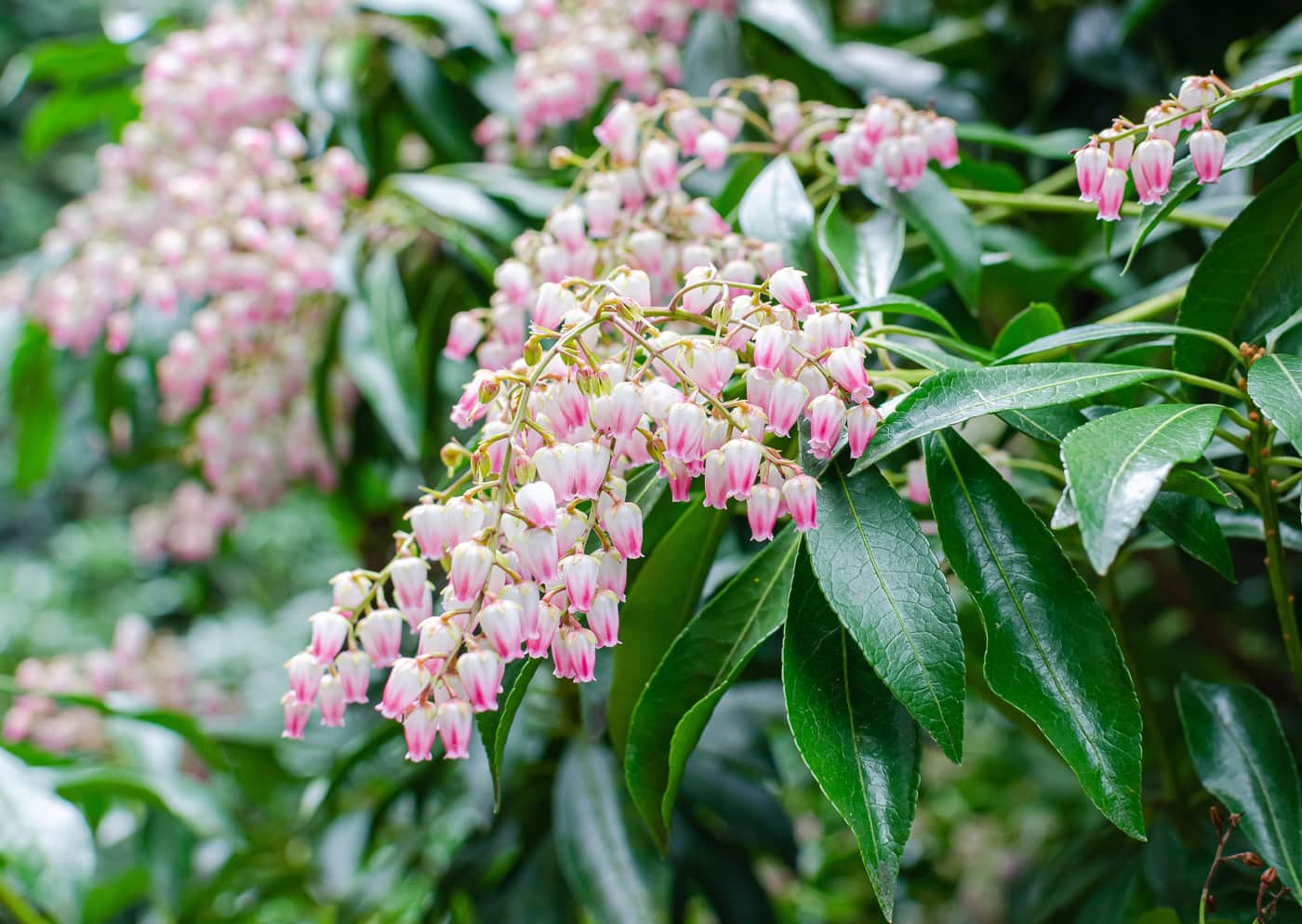
Bronze colored new growth follows pale pink racemes. Height 5 feet.
Pieris japonica ‘Valley Valentine’
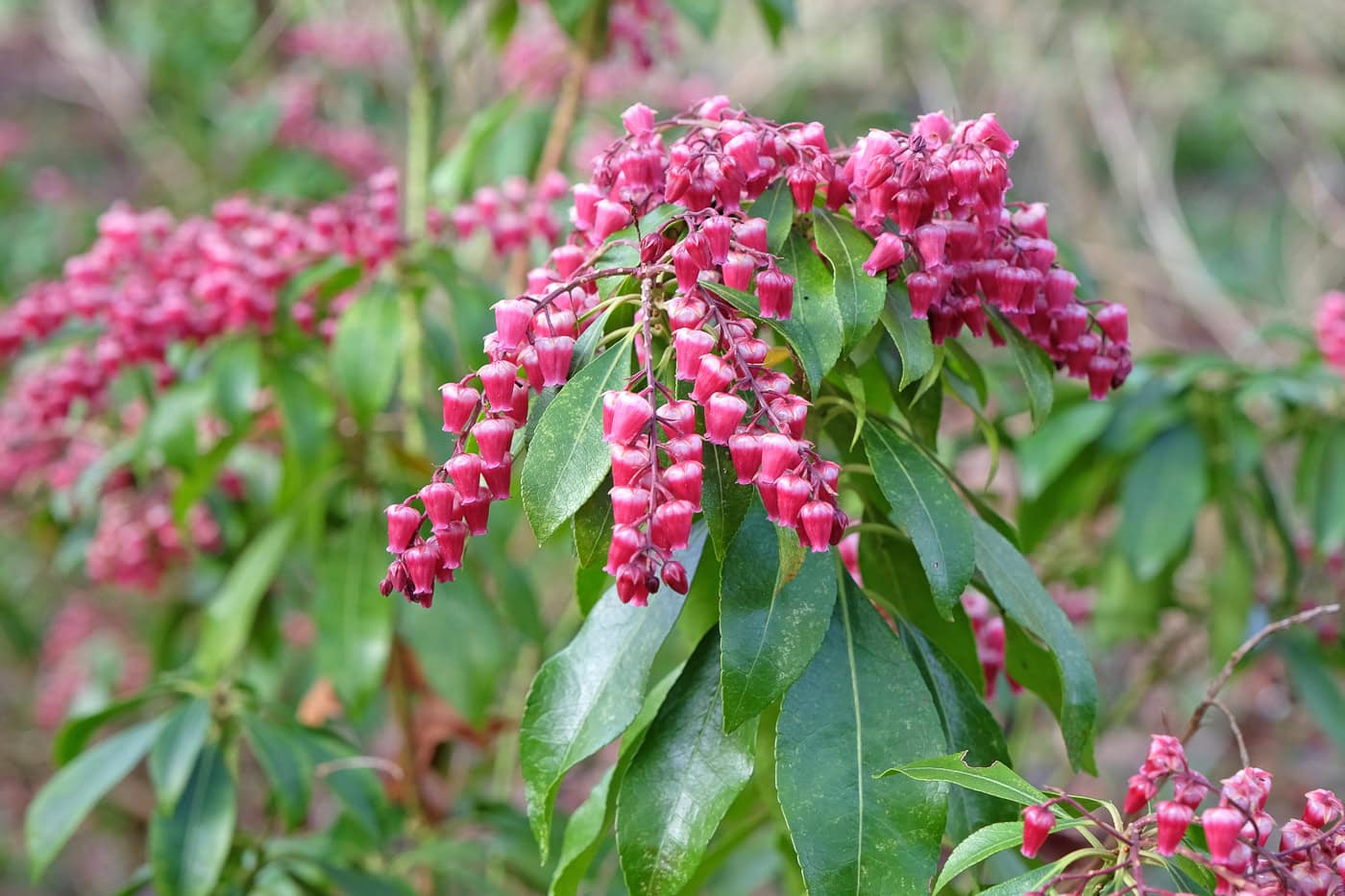
Red flowers. Height 7 feet.
Buy P. ‘Valley Valentine’ HERE.*
Pieris japonica ‘Flaming Silver’
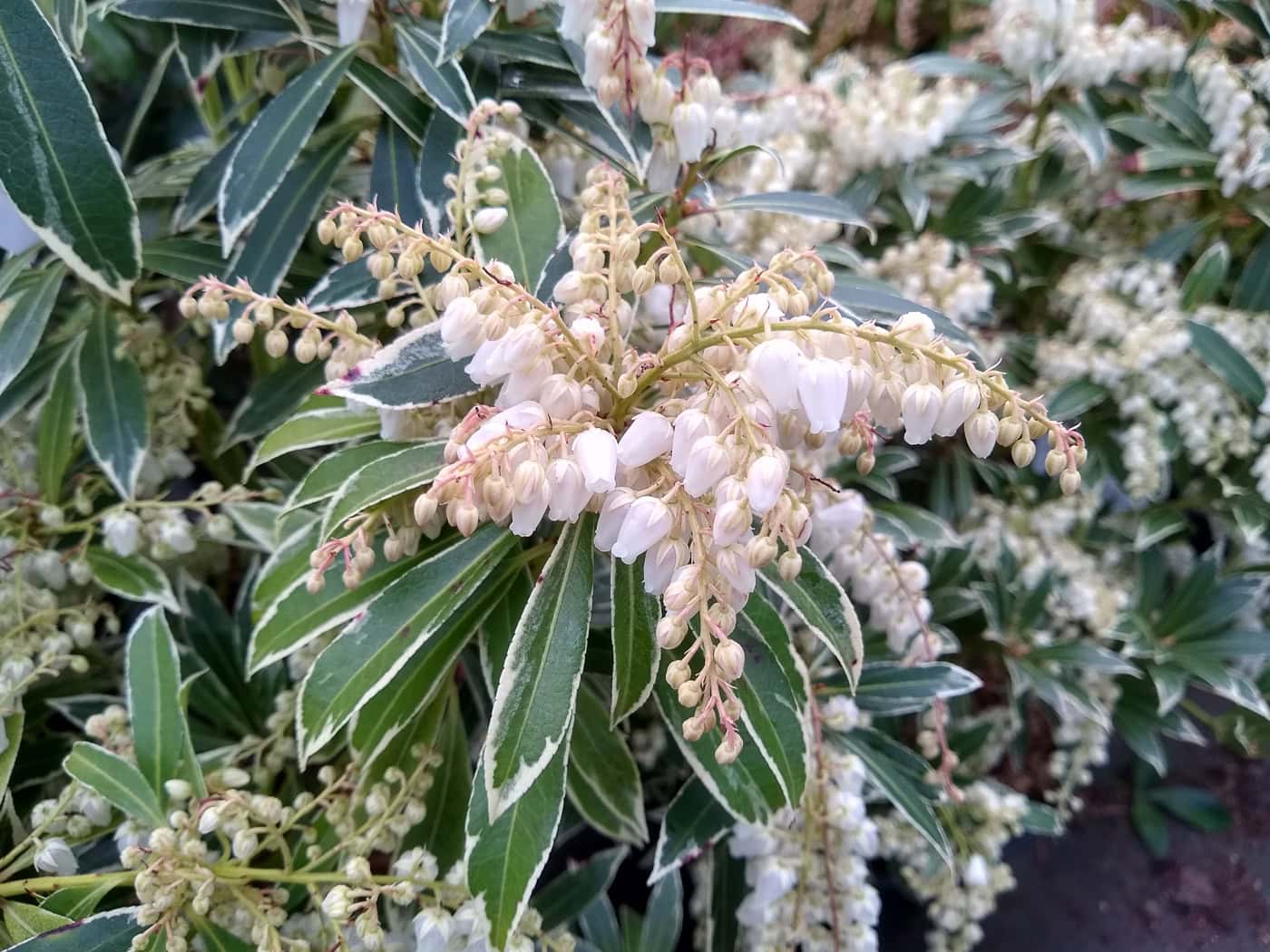
White flowers with variegated foliage. Height 5 feet.
Buy P. ‘Flaming Silver’ HERE.*
Pieris japonica ‘Katsura’
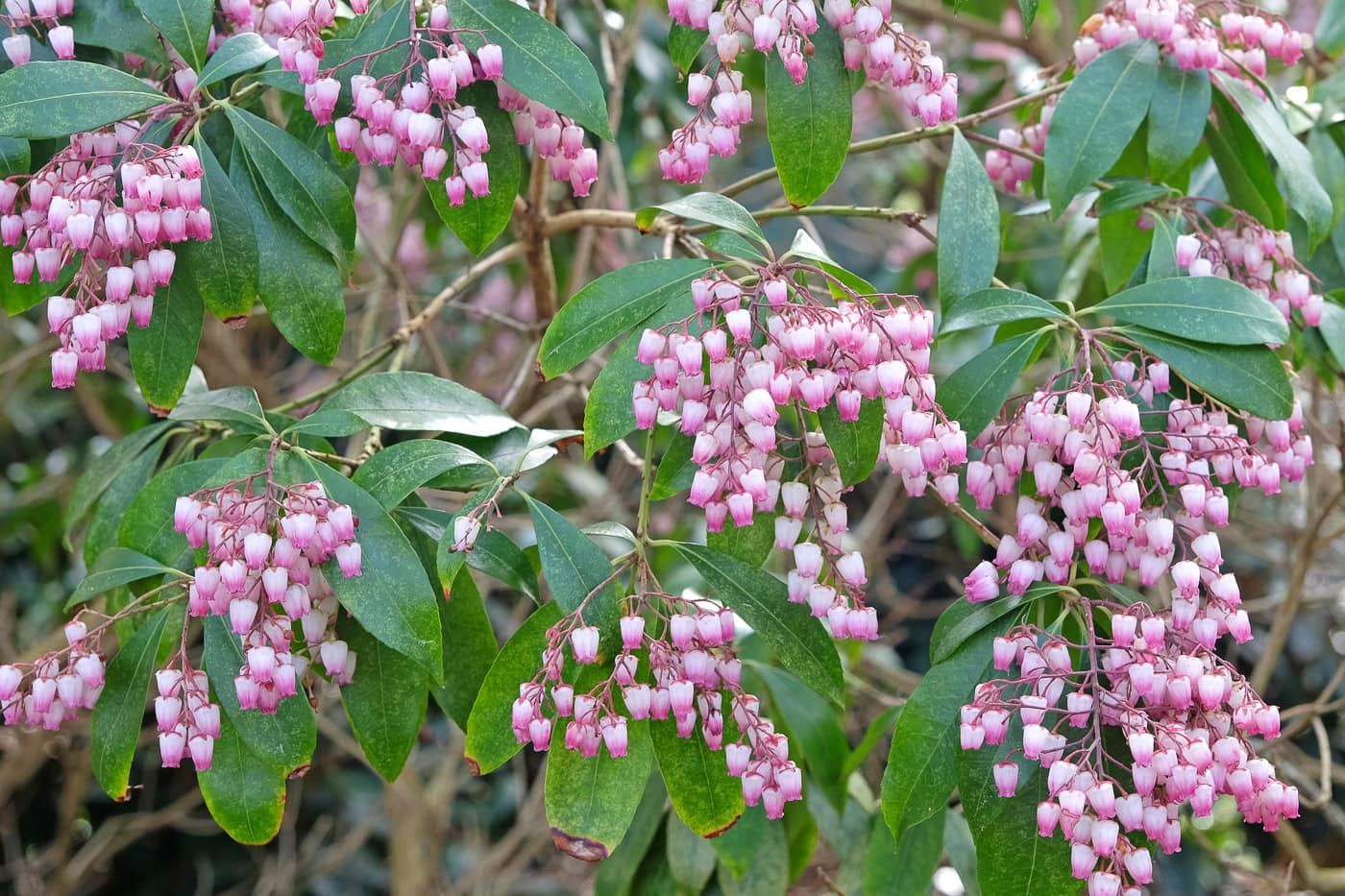
Rose pink flowers with burgundy new foliage. Mounding habit. 3′ x 3′ in 5 years.
Pieris ‘Mountain Snow’
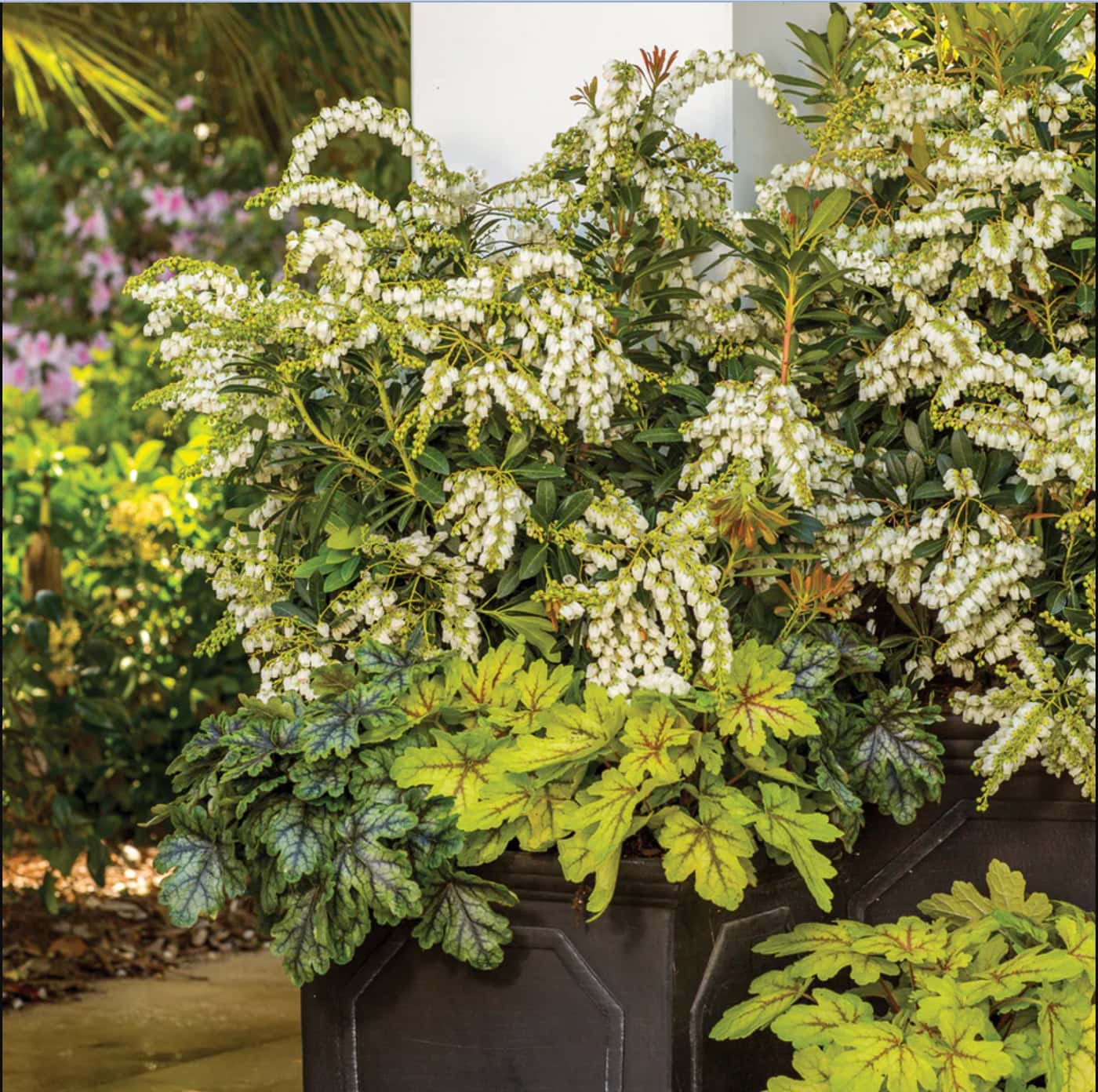
Grows to 4′ high. White flowers and bronze foliage in the spring. The best choice for southern gardeners since it tolerates heat and humidity better than other varieties.
Companion Plants
Rhododendrons, azaleas and camellias make great companion plants for Japanese Pieris since they all enjoy the same acidic soil and light conditions. You will have a stunning early spring to late spring riot of color.
Under plant these shade-loving shrubs with spring blooming bulbs and winter flowering heather for an even greater impact!
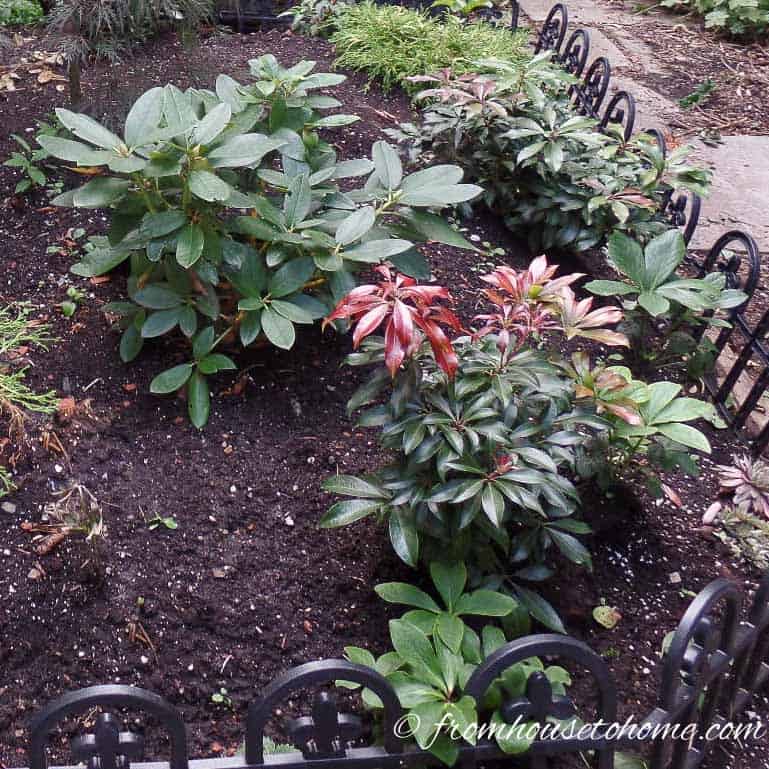
I have planted 3 ‘Katsura’ bushes this year in a new shady garden bed with a Rhododendron, a Japanese maple, and false cypress, surrounded by Hellebores.
To fill out the empty spots, I plan to add 3 Mountain Laurels when they are available at the nursery.
I hope I have inspired you to use Japanese Pieris in your garden. I love it in mine.
More shade shrubs you might like
Or browse all of our shrub articles.
Have comments or questions on how to grow Japanese Pieris? Tell us in the section below
This post was originally published on August 21, 2017 but was updated with new content on April 18, 2024.

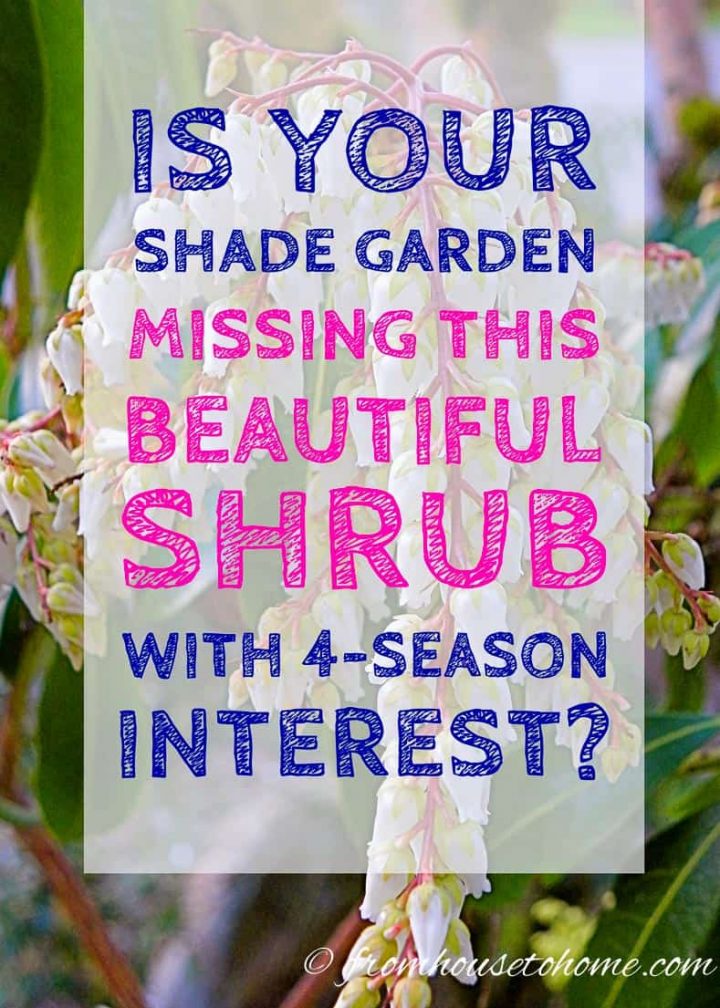
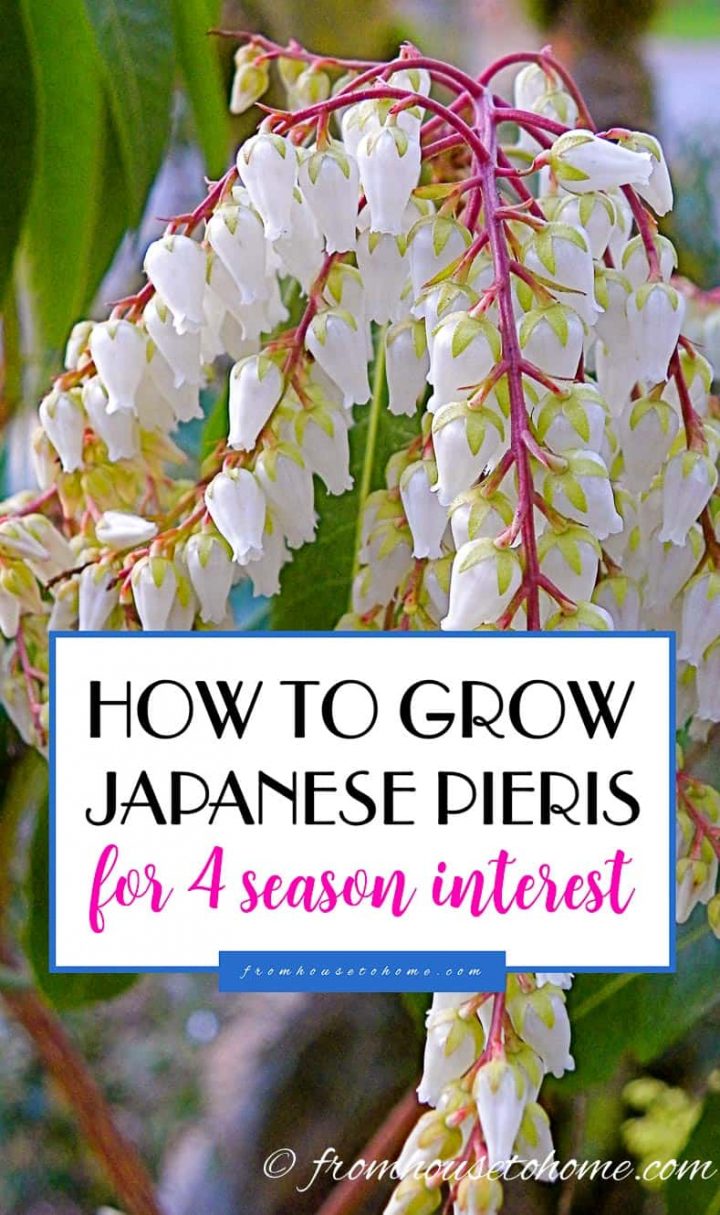
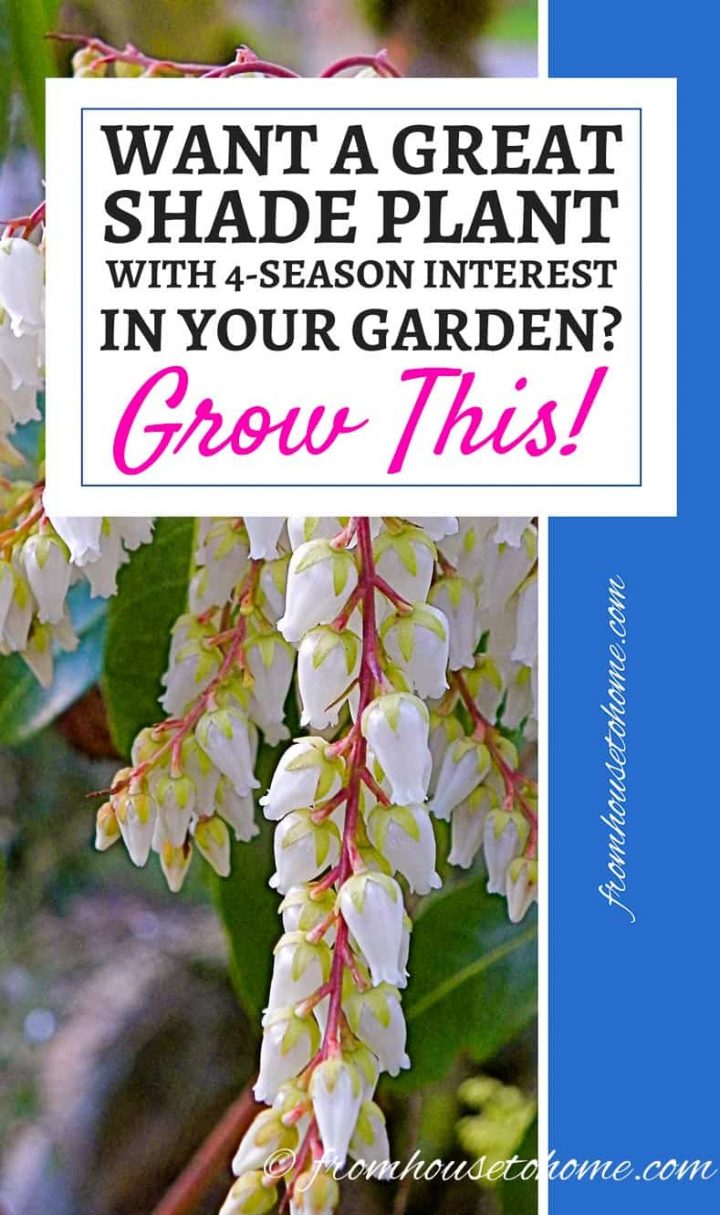
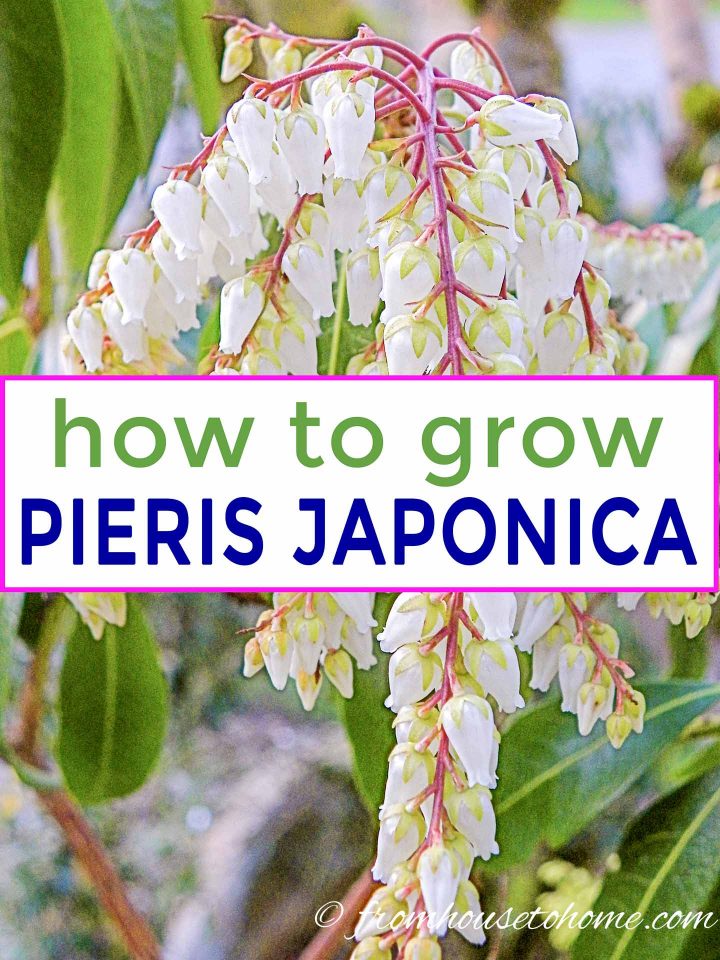
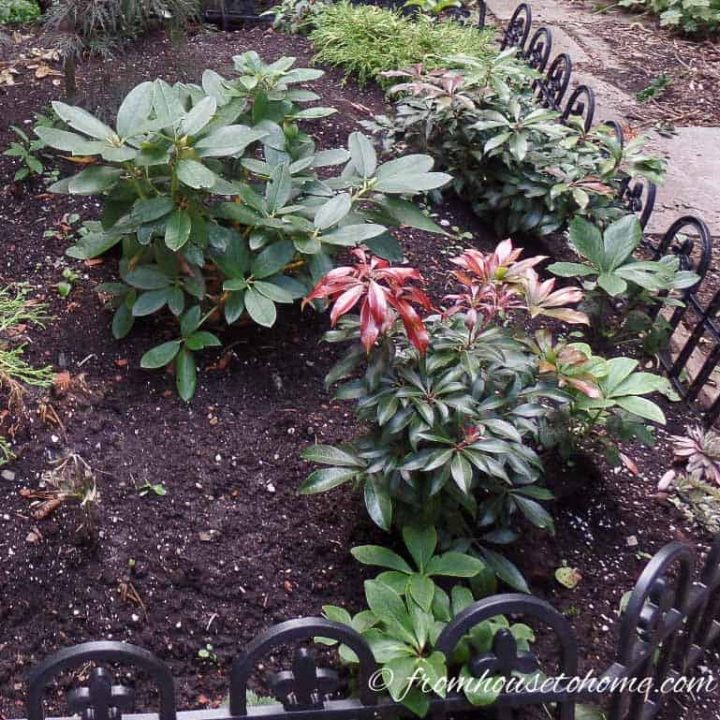
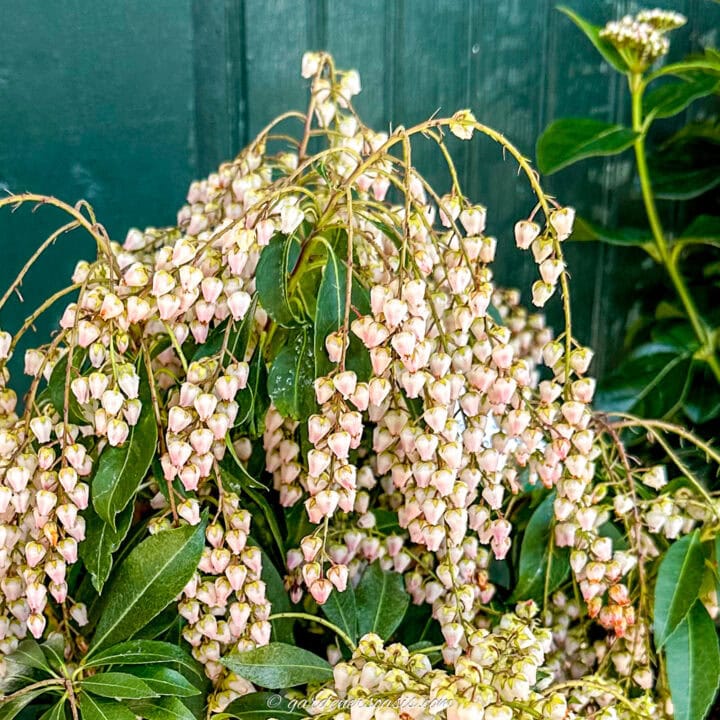
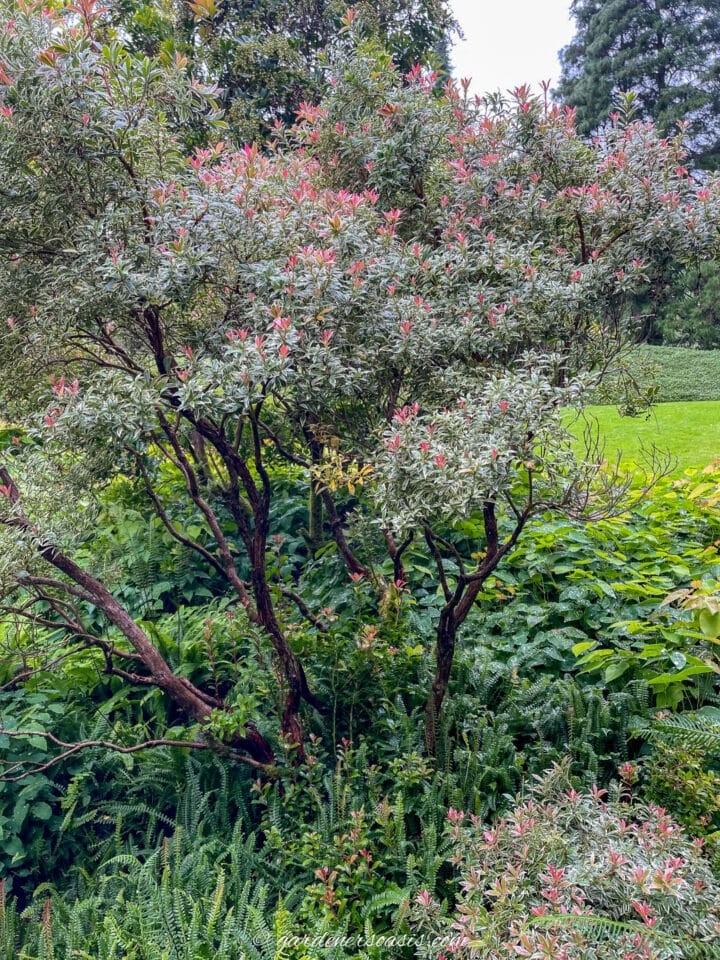
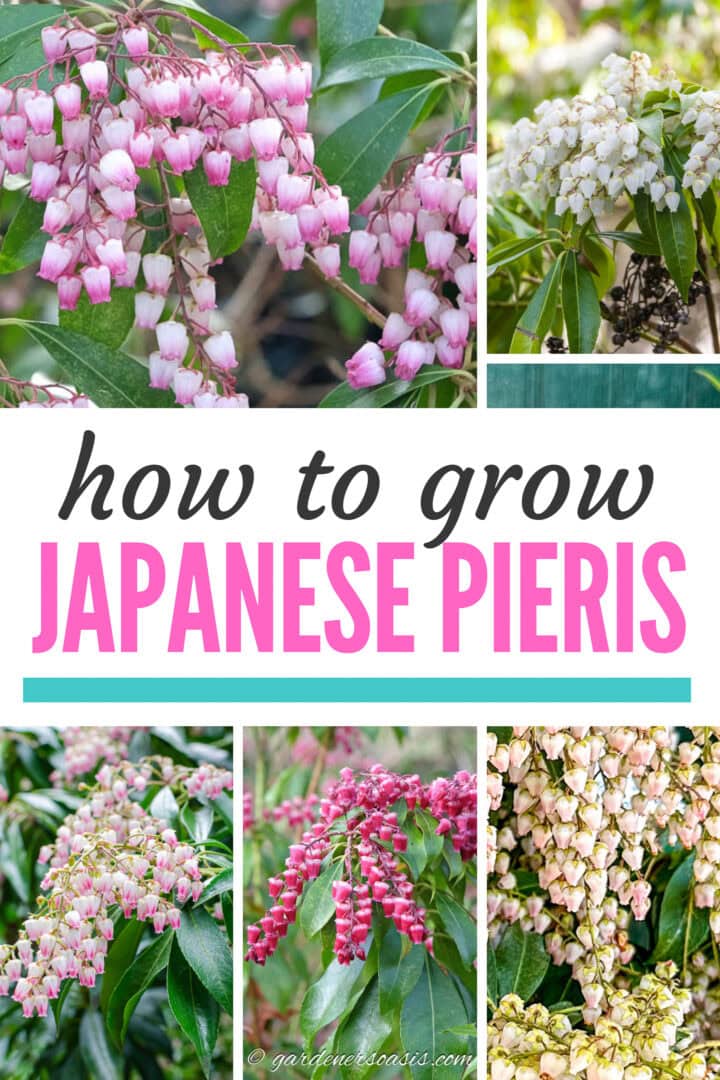
very good article what is the care for winter my pieris don’t do well I live in zone 5
Hi Willie…a couple of things to try in the winter…cover the base of your Pieris with a thick layer of straw. They do best if they are in a sheltered location. If yours are not, you can create a screen around the plant by sticking poles in the ground and surrounding it with canvas or landscape fabric. Keep the top open so that it still gets the sun. Finally, make sure that it is well watered during the growing season. That will help to prevent it from getting too dehydrated when the ground is frozen. Hope that helps!
thank I sure that it will help
Will my pieris japonica’Mountain Fire’ survive indoors as a house plant?
Hi Rhoeda…I haven’t tried growing them indoors so I’m not sure about that. Since it grows in zones with winter weather, I suspect it might need some cooler temperatures during part of the year to survive.
I will try it indoors this Fall with grow lights and I will check that it has cool temps. I took cuttings just in case.
I also have fountain grass in containers that the labels say that it is possible to have indoors. I don’t think that I could take cuttings .The label says just to divide it in the Spring.
I will let you know the results after this 2018 winter.
Thanks, Rhoeda! I’d love to hear how they do 🙂
I live in Houston, Zone 9, with quite a bit of filtered shade in the back yard. I bought the Valentine variety of Pieris Japonica. Can it be grown in a large container or the ground with attention to adding acid fertilizer, etc.?
Hello Anita, Pieris Japonica is well suited to be grown in pots. Make sure the pot has a drainage hole in it. Then put a layer of gravel in the bottom of the pot before adding a soil that has a lot of peat moss in it. Consistent watering is important. Water when the soil feels dry but do not keep it soggy.
Do Pieris tolerate walnut trees?
Hello Angie,
I have no experience with pieris and juglone sensitivity and I could not find any information pertaining to your question. However, because pieris need the same growing conditions as azaleas, rhododendron, and mountain laurel, all of which do not tolerate juglone, I suspect that pieris will not thrive under walnut trees. For a list of plants that will, I refer you to http://www.mortonarb.org/trees-plants/tree-and-plant-advice/horticulture-care/plants-tolerant-black-walnut-toxicity.
I am thinking of planting a Pieris, Katsura with 2 Pieris, Cavatine between my new concrete side walk and a brick garage wall [25 years old]. The bed is 5’4″ wide and the soil is very alkaline. If I fertilize well with Holly-tone will these survive. The area faces north and gets afternoon sun. Hoping they will do well.
Hello Robin, While I think your Pieris would look stunning in your planned location, I think it would be difficult to maintain the soil acidity they require. I suggest that you go with nature and choose shrubs that like alkaline soil e.g. euonymus, hydrangea, Japanese barberry(check to make sure it is not invasive in your area), boxwood to name a few.
My japonica andromeda has always been a show off. This year the new leaves have gotten very stiff and pointy yet the older leaves are fine. Why has this happened?
Hello Tina I am sorry that I have no idea why your Pieris is not thriving. It doesn’t sound like lace bug infestation or low acid ph. I would take an infected leaf to the local nursery to see if they can help.
Hi. I have several of these beautiful shrubs in my yard (inherited from the previous owner). I noticed that they had very sparse white flowers this spring compared to some in neighbouring yards. As these are new to me do I need to do anything. Different in fall or winter to ensure blooms in the spring?
Hi Kathy…Here’s a few things to try: 1. If you live in an area that doesn’t have acidic soil, give them some Rhododendron fertilizer. (I usually do it before they bloom but you can do it now to prepare them for next year). 2. If you’re going to prune them, do it immediately after they have bloomed. Otherwise, you will cut off next year’s buds. 3. They have very shallow roots so covering them with a thick layer of mulch helps to keep the plant happy. 4. They like moist soil that is consistently watered, but don’t like to be too wet. So make sure you have good drainage where they are growing. Hope that helps!